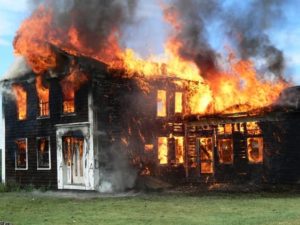Safety Experts Say Smoke Alarms Are Decreasingly Effective
Will your Smoke Detector help you when you need it?
 In early 2006, a federal jury ruled that the design of ionization smoke alarms was defective in a fire that trapped 56-year-old William Hackert Jr. and his 31-year-old daughter Christine in their house near Albany in 2001. However, even before this ruling, safety experts were already questioning whether this type of smoke alarm is adequate to deal with the threat of fast-burning synthetic materials prevalent in American homes.
In early 2006, a federal jury ruled that the design of ionization smoke alarms was defective in a fire that trapped 56-year-old William Hackert Jr. and his 31-year-old daughter Christine in their house near Albany in 2001. However, even before this ruling, safety experts were already questioning whether this type of smoke alarm is adequate to deal with the threat of fast-burning synthetic materials prevalent in American homes.
Ionization alarms, which use radioactive material to detect smoke, react earlier in fast-burning flaming fires. Photoelectric alarms, which detect changes in light patterns, react earlier in slow smoky fires. Experts agree that both types save lives. However, a problem arises because the time needed to escape has shortened significantly because of fast-burning synthetics used in furniture and carpets. Smoke alarm use standards may need to change to accommodate this phenomenon.
In 2001, Consumer Reports recommended that homeowners install at least one of each type of alarm on every level of a house to provide sufficient warning time for different types of fires. A recent report from the Public/Private Fire Safety Council noted that some test escape times were “tight or insufficient” with either alarm for bedroom or living room flaming fires. The group suggested that Underwriters Laboratories (UL) modify its standard to require faster detection of smoldering fires. Current UL smoke alarm standards require alarms to respond within 4 minutes of a flaming fire and in a smoldering fire before smoke obscures visibility by more than 10 percent per foot.
In today’s homes, the synthetics in furnishings, fabrics and carpeting smolder longer, but burn faster than natural materials like wood and cotton, which char as they burn. Synthetics melt and pool which produces significantly more energy when they burn. This has shortened the time between first flames and combustion of an entire room due to accumulated heat and gases to approximately 2 to 4 minutes. The average time between first flames and complete combustion 30 years ago when the UL standard was developed was 12 to 14 minutes.
In February of 2006, UL began studying the smoke characteristics from 40 materials commonly found in homes in the effort to make alarms more effective. Also under study are the byproducts of today’s smoke, which can be lethal. Results of these studies are expected by the end of the year.
Another reason for UL concern is the increase in U.S. fire fatalities in the past 12 months to a rate of about 3,500 annually. One likely factor is the increasing use of candles as mood lighting. Candles now cause about 18,000 fires a year, triple the number five years ago.
